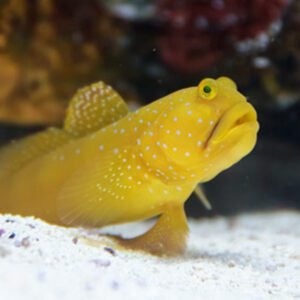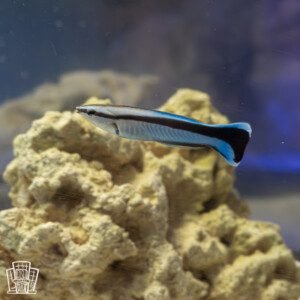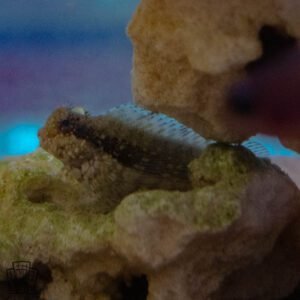Description
- Scientific Name: Siganus magnificus
- Common Names: Magnificent Rabbitfish, White-spotted Rabbitfish
- Maximum Length: 9.4 inches (24 cm)
- Minimum Aquarium Size: 75 gallons (284 liters) for a single fish; 100 gallons (378 liters) or larger for a pair. Their active swimming and grazing habits require ample space.
- Foods and Feeding Habits: Herbivorous, primarily grazing on algae in the wild. In aquariums, provide algae-based flakes or pellets with spirulina, supplemented with nori sheets or fresh greens like lettuce. Feed 2-3 times daily. Access to algae-covered rocks or a refugium supports their natural diet.
- Reef Safety: Reef-safe with caution; they typically don’t harm corals but may nibble on soft corals or polyps if underfed. A consistent herbivorous diet minimizes risks in reef tanks.
- Temperament: Peaceful but can be territorial with other rabbitfish or similar species. Best kept singly or as a bonded pair.
- Description: The Magnificent Rabbitfish is a standout in marine tanks, admired for its vivid coloration. From the reds on the edge of the fins to the Yellow on the face with a bold black band across the face. Transitioning to a white chest and a silver-gray body and a large brown spot on its back. Native to the eastern Indian Ocean, from Thailand’s Andaman Sea to Indonesia, they thrive in tanks with open swimming areas, live rock for cover, and strong water flow. Their algae-grazing habits help keep tanks clean, but their venomous spines require careful handling. A great pick for aquarists in need of a “working fish.”
Fun Facts:
- Magnificent Rabbitfish have venomous spines on their dorsal, anal, and pelvic fins, a defense mechanism that packs a painful sting if mishandled.
- In the wild, they often swim in pairs or small schools, grazing on algae in shallow reefs and lagoons.
- Their black face mask, resembling a bandit’s disguise, helps deter predators and adds to their striking appearance.





